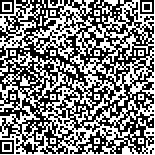|

二维码(扫一下试试看!) |
| 扫描电镜/能谱法结合多元统计学无损检验烟用接装纸的研究 |
| Study on Nondestructive Testing of Tipping Paper by SEM / EDS Combined with Multivariate Statistics |
| 收稿日期:2020-12-16 |
| DOI:10.11980/j.issn.0254-508X.2021.04.006 |
| 关键词: 烟用接装纸 扫描电子显微镜 X射线能谱 多元统计学 区分检验 |
| Key Words:cigarette tipping paper scanning electron microscopy X-ray energy spectrum multivariate statistics discrimination test |
| 基金项目:中国人民公安大学2019年基科费重点项目(2019JKF222)。 |
|
| 摘要点击次数: 2908 |
| 全文下载次数: 1639 |
| 摘要:为建立一种快速检验烟用接装纸的模型,利用扫描电子显微镜/能谱法(SEM/EDS)结合多元统计学原理对收集到的60个烟用接装纸样品进行检验分析。首先依据样品外观颜色和SEM下微观形貌的不同对样品进行初步分类,利用K-均值聚类法依据X射线能谱仪测定样品无机元素含量对烟用接装纸进行进一步的分组,并借助主成分分析和多元线性回归分析验证聚类结果的准确性,然后通过判别分析构建判别函数预测模型,建立了基于K-均值聚类法的分类模型并将2个未知样品代入验证。K-均值聚类结合组内平方和法将黄色粗糙性接装纸分为4组,通过多元线性回归分析对聚类结果进行了验证,结果显示线性回归模型的显著性水平为0.001,各个元素变量对组别变量具有显著影响。判别分析显示由3个判别函数组成的分类模型的准确率达到100%,代入回判的2个未知样品也被成功识别。 |
| Abstract:In order to establish a rapid test of tipping paper model, 60 samples of tipping paper were analyzed by Scanning Electron Microscope/Energy Spectrometry (SEM/EDS) combined with multivariate statistics. Firstly, the samples were preliminarily classified based on the appearance color and the micro morphology under SEM. Then, the samples were further grouped by K-means clustering method according to the content of inorganic elements determined by X-ray energy dispersive spectrometer. At the same time, the accuracy of clustering results was verified by principal component analysis and multiple linear regression analysis. Then, the discriminant function prediction model was constructed through discriminant analysis. The classification model based on K-means clustering method was established and verified with two unknown samples. The yellow rough tipping papers were divided into four groups by combining K-means clustering and sum squared within group method, and the clustering results were verified by multiple linear regression analysis. The results showed that the significance level of linear regression model was 0.001, and each element variable had a significant impact on the group variable. Discriminant analysis showed that the accuracy of the classification model composed of three discriminant functions reached 100% with successfully identification of two unknown samples. |
| 查看全文 HTML 查看/发表评论 下载PDF阅读器 |